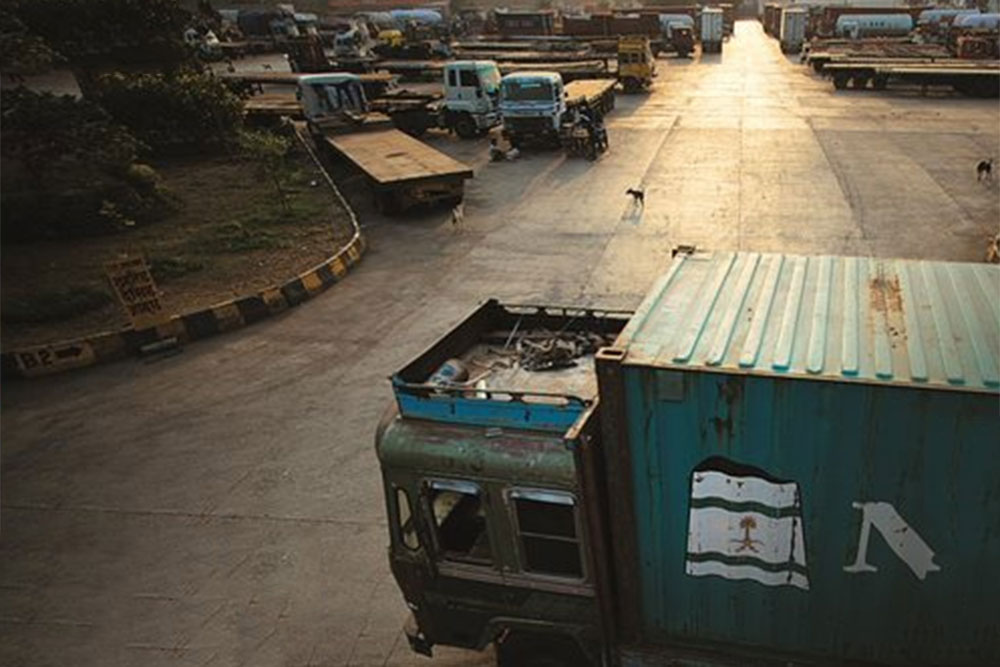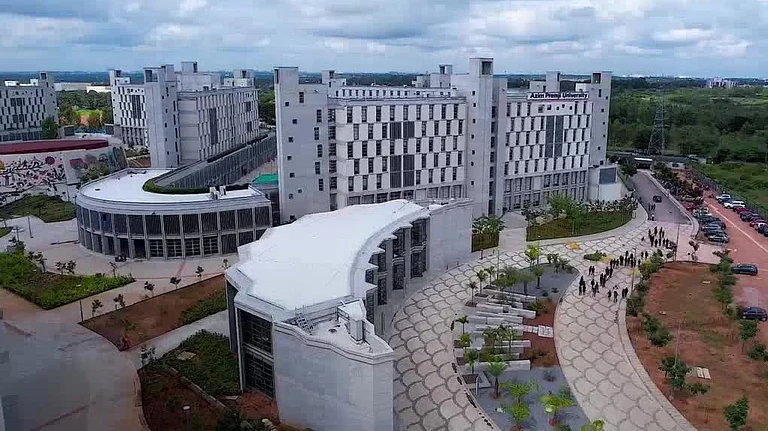Cartelisation impedes the smooth functioning of any industry, by rigging the market to benefit a few players. It usually involves competing firms fixing prices and blocking the entry of new players using a variety of tactics. Cartelisation is usually difficult to conclusively prove, since those involved are careful enough to not put down collusion agreements on paper. However, there is sufficient basis to say that the Indian transportation industry is a highly cartelised one.
In February 2015, the Competition Commission of India (CCI) imposed a penalty of 10% on the average turnover of the All India Motor Transport Congress (AIMTC), the apex body of Indian transporters and truckers, after receiving complaints of cartelisation.
The complaint, filed by S P Singh of the Indian Foundation for Transport Research and Training (IFTRT), stated that the AIMTC indulged in cartelisation by directing all its members to hike truck rentals by 15% after an increase of ₹5 in diesel prices was announced by state-run oil marketing companies in September 2012. The AIMTC, in turn, refuted the charges arguing that it is a highly fragmented industry, which is always under pressure due to escalating operating costs; and that the tariff is decided by market forces.
Industry-wide malaise
When the apex body has been accused of cartelisation by the CCI, one can expect that this malaise extends to the roots of the road transport industry. Indeed, a 2006 study (things have hardly changed since then) on the nature of the truck industry in the Mumbai Metropolitan Region by S Sriraman, professor of transport economics, Mumbai University, reports similar findings of cartelisation.
More than 70% of the industry comprises small operators who own less than five trucks. “This unique ownership profile has created middlemen who act as agents for small truck operators,” the study notes. And with big transporters moving away from an asset-heavy model to an asset-light one, this dependence is expected to continue.
“Given the dominance of small operators, it is natural to expect a competitive regime to prevail. However, given the segmentation of the industry in terms of market players and market makers, it has been an emerging feeling that this is a sector, which is prone to be dominated by some of the players and makers,” the report mentions.
A study by Deloitte in 2004 discussed how low profitability of small operators arose not only from excess availability which depressed freight rates, and increasing fuel costs, but also due to the continuous shifting of large fleet operators towards an asset-light model as a consequence of which dependence on intermediaries increased.
The industry is characterised by a large number of operators and intermediaries. So, what is the agreement between various players? Sriraman elucidates, “Some are formal while most seem to be informal. These informal agreements appeared to be often highly iniquitous as a direct consequence of the intermediaries’ access to information. The power the intermediaries exert over the industry is not, however, matched by the capital employed by them. This suggests that there is an imbalance here in the way the revenue is being shared by the various players in this industry.”
He looks at various cases in the past in which operators were found guilty of forcing customers to hire trucks from members only, thus, preventing non-members from loading goods. He notes that given the pressure on margins, it is only with a certain level of overloading that operations turn out to be viable.
The players
The structure of the road transport industry in India is extremely complex as it comprises multiple players. According to the Motor Vehicles Act, 1988, state governments are authorised to issue directives regarding fixing freight rates, however they refrain from doing so. Instead, the consignors (who want to transport goods) and operators (who transport goods) interact with each other through booking agents and brokers who represent the demand and supply side, respectively. Sriraman’s report states that booking agents representing the demand side “have a virtual monopoly of most inter-state and long-distance movement.”
The broker representing the supply side provides vehicles to the booking agent for a commission from the truck operator. This broker is responsible for the timely and secure delivery of goods to the consignors. A 2007 World Bank report explains the reason for reliance on the brokers, “ [They] ensure quality control on the reliability of the operator and also as a means of facilitating prompt loading.”
Sriraman observes that there are around 5,000 booking agents operational in the Mumbai Metropolitan Area. “Most of them are involved as booking agents only while a good number are operators with limited fleet capacity. Some of them are also custom agents and multimodal operators,” he adds.
Small operators constitute the bulk of operators. “They are involved mainly in the physical movement of goods and depend on brokers and other fleet operators who in turn depend on the booking agents for obtaining business. The small operators are not in a position to perform functions such as aggregation, handling, delivery of cargo and marketing. These operators do not have the geographical reach and necessary infrastructure to tap business on a continuous basis and hence are forced to rely on brokers. They do not come into direct contact with the users,” explains Sriraman. Often, larger operators use the services of smaller operators when their own fleet falls short.
A National Council of Applied Economic Research study (1979) discovered that more than 80% of the small operators depended on booking agents. Further studies by Central Institute of Road Transport (1994) and the Asian Institute of Transport Development (1999) found that between 65-70% operators depended entirely on middlemen for their business. “Almost all the studies emphasise a significant role especially for the booking agents and a somewhat limited role for the broker,” says Sriraman.
There are three means by which booking agents act as market makers. “The first relates to an agreement between the agent and the operator for a stipulated period during which the former arranges guaranteed freight at rates fixed in advance. Second, booking agents have daily arrangements and offer goods to operators at prevailing market rates. Third, the agent acts an intermediary between the consignor and the operator thereby, earning a commission from both.”
Despite the low entry barriers, Sriraman says “the new entrants would not normally know from where to expect demand for their services except through the players they are attached to. Thus, even basic information requirements are not available to new entrants. Though this is not perceived to be an entry barrier, the problem is formidable and gets resolved only by an almost complete surrender to other significant players by which time, an exit is also ruled out. Thus, there are information asymmetries to contend with.”
The new entrants
Start-ups who have endeavoured to disrupt this $100-billion tech-averse sector by weeding out the middlemen from the equation have found the going tough. Even among logistics tech start-ups, the share of funding for start-ups that deal with freight transportation is miniscule, as per data from Tracxn. There are 58 start-ups in this sector out which only few have managed to raise significant funding — Rivigo (previously TrucksFirst), which recently raised $30 million in series-B funding from SAIF Partners; and BlackBuck, which raised $25 million from Yuri Milner and Tiger Global.
Start-ups have found it difficult to crack this equation since market dynamics vary according to local conditions and also because of the presence of multiple stakeholders. Murtaza Hamid, who recently launched a truck logistics aggregation portal — sastabhada — discovered the entrenched competition in the industry the hard way. He says he was detained by people in the truck industry who wanted a piece of his technology that “can trace the location of a vehicle based on its registration number, engine number and other electronic parts [engine control unit] which can be tracked via a satellite,” as quoted in a national newspaper. Hamid’s firm efficiently connects consignors to operators so that they can continue to operate at full capacity and don’t have to make the return journey without any load. The consignor’s costs are reduced since he doesn’t have to pay for the fuel costs of the return journey.
“Truckers don’t want to be tracked; some transporters want this to go away. Why? Almost 85% of the business is held by 15% of the transporters. I am trying to spread the wealth. No one likes that,” he is quoted saying in the same news report.
The industry is also notoriously tech-averse, with most trucks being outdated and with hardly any drivers using smartphones. A manager with a venture capitalist firm based in Europe which is looking to invest in logistics tech start-ups in India points out that industry experience is a must as there are multiple parties involved and how everyone interacts in the value chain is not easy to understand for an outsider.
He adds, “Opposition from offline players is yet to be seen in the industry. I think when an online player starts taking more than 20% transportation orders from a client, then he will face opposition from offline vendors. Still, it’s a highly unorganised industry. The biggest player has around 4,000 trucks of the five-six million trucks which are out there. So a tech disruption is indeed possible,” But the question is — when will that happen? Given the high level of cartelisation, the industry’s aversion to technology and indecipherable contracts between the various players — only time will tell.
This is the final piece of a six-part series on the highway economy











